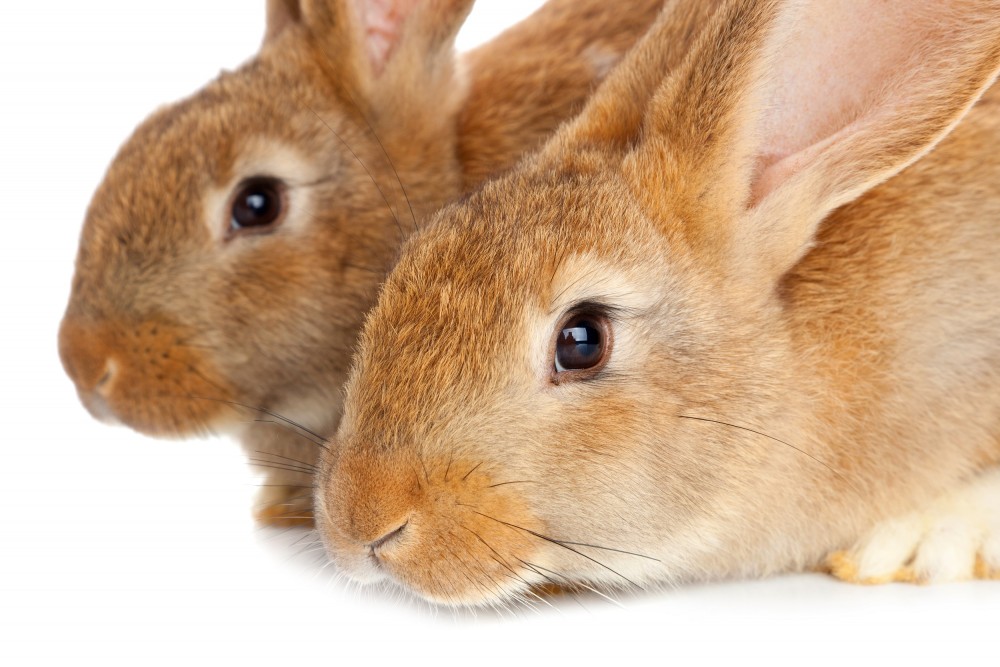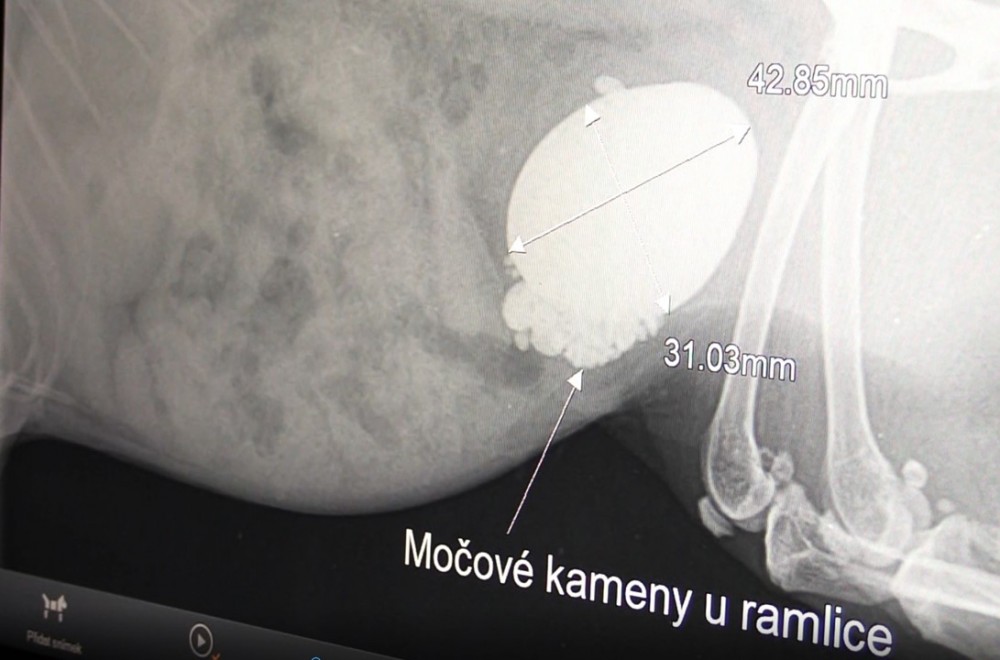Urinary tract diseases and urinary stones in rabbits
Not only humans, cats, dogs, but also rabbits can suffer from various types of urinary tract diseases.

In obese rabbits or in rabbits suffering from overweight, there is a predisposition to lower urinary tract disease, accompanied by symptoms of urinary incontinence, the so-called mud urine and urinary stones in the bladder. The stones in the ureters and kidneys that we occasionally see can result in fatal kidney disease leading to their failure.
Clinical symptoms
Clinical signs of lower urinary tract disease in rabbits include loss of habit of rest, depression, hunched urination, gnashing of teeth, moisture around the genitals or chronic skin irritation around them, urinary incontinence, increased drinking and urination.
Rabbits may also have semi-solid urine (resembling toothpaste) or blood in their urine. However, breeders sometimes confuse the presence of orange to red rabbit urine due to a diet with blood in the urine. Urine in a healthy rabbit can vary in color from yellow to orange, brown or red. Feeding dandelions and cabbage plants often results in the excretion of red-colored urine.
Diagnosis
As herbivores, rabbits excrete basic (alkaline) urine (pH 8-8.2), in which calcium carbonate (calcium) forms to form a white precipitate. Growing rabbits usually have clear urine.
The urine of anorexia rabbits can also be clear. High levels of dietary calcium, dehydration, and urinary retention can result in greater amounts of calcium precipitates (calcium carbonate), which then form a thick urinary mud in the bladder. This in turn irritates the urethra.
In addition to calcium carbonate crystals, we can also find struvite (magnesium ammonium phosphate) and oxalate (calcium bicarbonate) crystals in the urine of healthy rabbits.
Due to the composition of urinary stones, they can be easily visualized using X-rays or sonographic examination. At the same time, we recommend performing blood and urine tests on sick rabbits. Examination of renal function is necessary in rabbits with urinary stones, especially if the stones are also found in the kidneys and / or ureters.

Therapy
Urinary stones must be surgically removed. Stones in the bladder can enlarge and chronically auction the bladder wall, causing chronic infection and inflammation of the bladder.
Depending on the health status of the rabbit at the time of diagnosis, it is advisable to first stabilize the patient with infusion therapy. If the rabbit is not ingesting food, assisted feeding is necessary.
VIDEO: Removal of urinary stones at the female rabbit Dupalka
Urine sand
If the rabbit does not have urinary stones, but has accumulated thick sludge or sand in the bladder causing disease and discomfort, conservative and symptomatic treatment is usually sufficient. Surgery is not usually necessary. Again, however, we recommend performing not only X-ray and sonographic examinations, but also urine and blood tests. This will help reveal the severity of the infection and the stage of the disease, and whether other organs (such as the kidneys) are also affected. Rabbits with sludge or mud in the bladder usually require several days of hospitalization with infusion therapy and medication.
In cases of "sludge", it may be necessary to support urination and avoid stressing the rabbit. Stress can reduce the flow of blood through the kidneys and cause oliguria (excretion of insufficient urine). We also recommend increasing voluntary water intake. It can be effective to increase the feeding of large quantities of vegetables containing water, leafy vegetables, green fodder and sweetening water with sucrose or fruit juice. Some plants, such as dandelions, plantains, raspberry leaves and yarrow, are considered diuretic.
If urinary tract disease is detected early and treatment is initiated, permanent damage to the animal will be avoided.
Prevention
The prevention of urinary stones in rabbits have not been thoroughly elucidated, however, feeding alfalfa and plants with a high calcium content (eg spinach, broccoli, parsley, cabbage) increases the risk of bladder disease. Rabbits should be provided with sufficient fluids and paddocks to promote healthy excretion. The main component of feeding (60% - 80%) should be quality meadow hay, in high-risk patients with the addition of meadow fescue. 12% then vegetables, such as carrots, apples, cucumber, salads. Only 6% of the feed ration should consist of complete feed mixtures such as granules. Give treats to rabbits only twice a week in a volume of up to 2% of the usual feed ration.
30.12.2022

